Arowana Fish Care Guide: Habitat, Diet, Tank Setup & More
Learn how to care for your Arowana fish, including their habitat, diet, breeding habits, and how to set up a healthy tank environment for them to thrive.
Table of Contents
- Natural Habitat & History
- Care Requirements For Arowana Fish
- Species of Arowana Fish
- Diet and Feeding Habits
- Lifespan and Growth
- Differences Between Male and Female of Arowana Fish
- Breeding and Survival of Aroowana Fish
- Social Behavior of Arowana Fish
- Ideal Tank Setup and Water Conditions of Arowana Fish
- Interesting Facts of Arowana Fish
- Pro-Tips to Maintain Healthy Arowanas
- Faq
- Conclusion
Arowana fish, also called "Dragon Fish" because of their elongated body and metallic scales, which are quite big, belong to the Osteoglossidae family. They have different scientific names according to species, which include Scleropages formosus (Asian Arowana), Osteoglossum bicirrhosum (Silver Arowana), and Scleropages jardinii (Jardini Arowana).
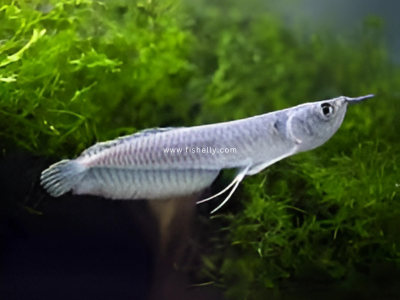
Natural Habitat & History
Arowanas are old fish species that have survived for millions of years. They inhabit freshwater rivers, lakes, and swamps in South America, Asia, Australia, and Africa. With their jumping ability and hunting prey near the water's surface, they are quite aggressive predators in the wild. In some Asian cultures, they are considered symbols of luck, prosperity, and strength, often resembling the mythical dragon.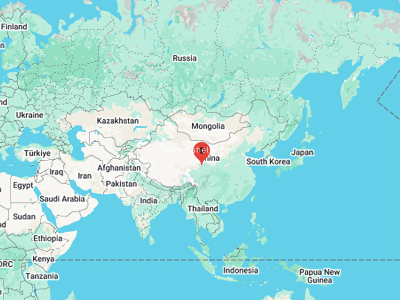
Care Requirements For Arowana Fish
Arowanas need huge aquariums; a juvenile should have at least 250 gallons, and an adult should have more than 400 gallons. The tank must have a secure lid since they are strong jumpers. Arowanas thrive in clean, well-filtered water with a temperature between 75-82°F (24-28°C) and a pH range of 6.5-7.5.
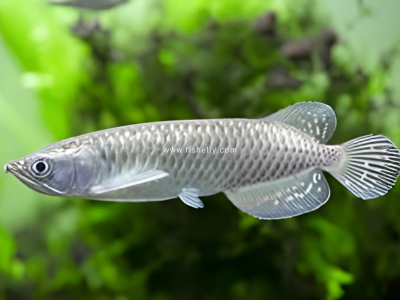
Species of Arowana Fish
There are 10 recognized species of Arowana fish. These include the colorful Asian Arowana, the jumping Silver Arowana from the Amazon, the darker Black Arowana, and the Australian Arowana from Northern Australia. The African Arowana is unique to Africa, while the Pearl Arowana is found in Myanmar with patterned scales. The Batata Arowana is the world's largest freshwater fish, and the Red-tailed Golden Arowana is a rare variant. Finally, the Albino Arowana is a genetic mutation, not a species of its own.
Diet and Feeding Habits
Arowanas are carnivorous, meaning they mainly feed on a high protein deit.The diet further comprises of:
· Live or frozen foods such as shrimp, crickets, and small fish
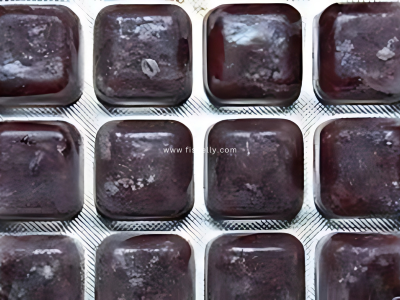
· High-quality pellets and insects
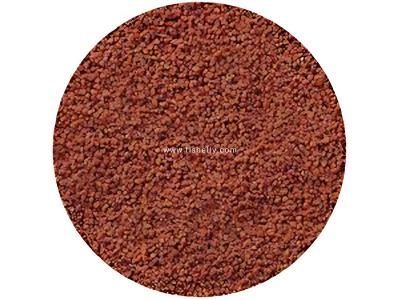
· Occasional fruits and vegetables for balanced nutrition Feeding should be done only in moderate amounts to avoid overfeeding and degradation in water quality.
Lifespan and Growth
Arowanas have a very long lifespan, with some species living up to 15-20 years in captivity. Some species have been recorded to live more than 25 years in ideal conditions. They can grow up to 3 feet (90 cm) in length, requiring spacious tanks to thrive.
Differences Between Male and Female of Arowana Fish
Male
· Males typically have longer, more slender bodies.
· They possess larger pectoral fins.
· During breeding, males engage in mouthbrooding, carrying fertilized eggs in their mouths until they hatch.
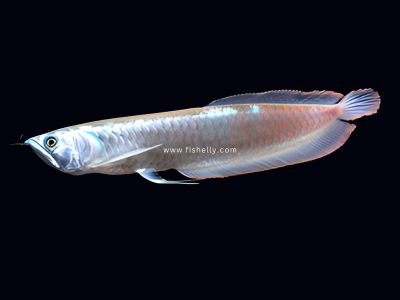
Female
· Females generally have broader and rounder bodies.
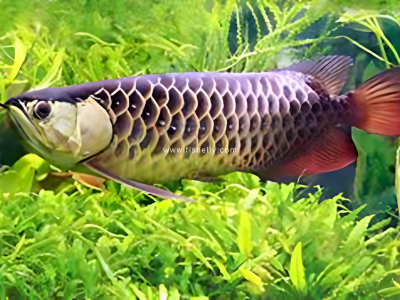
Breeding and Survival of Aroowana Fish
Arowanas are mouthbrooders. This is when the male will carry the fertilized eggs in his mouth until they hatch. This allows protection for the fry until they are able to survive on their own. They are strong predatory fish with very good hunting abilities, which will enable them to survive in any environment.
Social Behavior of Arowana Fish
While juvenile Arowanas can live in groups, adults are highly territorial and prefer solitary lives. They tend to be aggressive towards tank mates, making them challenging to keep in community tanks.
Ideal Tank Setup and Water Conditions of Arowana Fish
Arowanas require a large tank, at least 250 gallons, with strong filtration and a secure lid, as they are excellent jumpers. Ideal water parameters include:
· Temperature: 75-86°F (24-30°C)
· pH Level: 6.0-7.5
· Water Hardness: Soft to moderate Providing driftwood, large rocks, and minimal decorations allows them enough space to swim freely.
Interesting Facts of Arowana Fish
· Arowanas have great jumping abilities, leaping up to 3 feet to catch prey.
· Their high intelligence allows them to recognize owners.
· Some Arowanas, like the Silver Arowana, are studied in scientific research for their unique respiratory system and primitive lineage.
· Asian Arowana is a very costly fish, priced in thousands of dollars for the rarest species.
Pro-Tips to Maintain Healthy Arowanas
· Stringent Filtration: Being a high waste producer, an arowana demands highly quality filtration.
· Regular Water Changes: To ensure water quality, 25-30% of water should be changed weekly.
· Gradual Change: Arowanas are sensitive to sudden changes in water parameters.
· Diet: A proper mix of live, frozen, and pellet food assure proper health.
Faq
1.What is an Arowana fish?
Arowanas are large, carnivorous fish known for their metallic scales and jumping ability, found in Asia, South America, Australia, and Africa.
2.How big do Arowanas get?
They can grow up to 3 feet (90 cm) in length.
3.What do Arowanas eat?
They eat live or frozen foods, high-quality pellets, insects, and occasional fruits/vegetables.
4.How long do Arowanas live?
They can live up to 15-20 years, sometimes longer with ideal care.
5.How should I set up a tank for my Arowana?
A 250-gallon tank with strong filtration and a secure lid is required.
6.What is the ideal tank environment for an Arowana?
Provide minimal decorations and ample space for swimming.
7.How do I know if I have a male or female Arowana?
Males are longer and slender, females are broader and rounder.
8.Are Arowanas good with other fish?
They are territorial and prefer to live alone.
9.How do Arowanas breed?
Males carry fertilized eggs in their mouths until they hatch.
10.What should I do if my Arowana is not eating?
Try offering live or frozen foods and ensure a varied diet.
11.How often should I change the water in my Arowana's tank?
Change 25-30% of the water weekly.
12.What are common health issues with Arowanas?
Poor water quality, improper diet, and stress from tank mates.
13.Why are Asian Arowanas so expensive?
They are rare and considered symbols of luck.
14.Can Arowanas be kept in smaller tanks?
No, they need large tanks (at least 250 gallons).
15.What should I do if my Arowana jumps out of the tank?
Place it back in the tank immediately and check for injuries.
16.How can I tell if my Arowana is stressed?
Look for changes in behavior, loss of appetite, or discoloration.
Conclusion
Arowanas are beautiful and rewarding fish, well suited to an experienced aquarist, with their size, diet and care requirements. Their beauty, intellengence, and ancient linage make a treasured addition to any large aquarium. Provided that they are well cared for, they can an awe-inspiring centerplace in your aquatic world.
Have questions? Drop a comment below! #fishelly_official Fish Community






